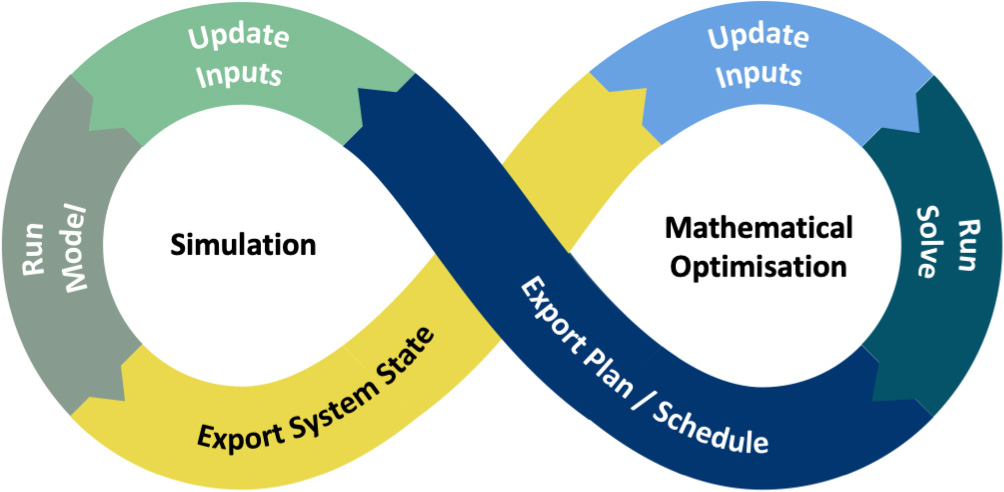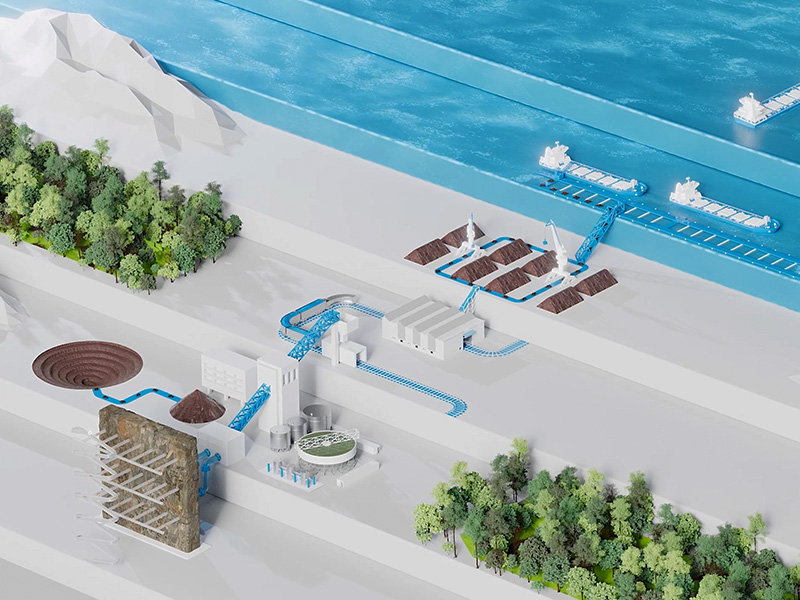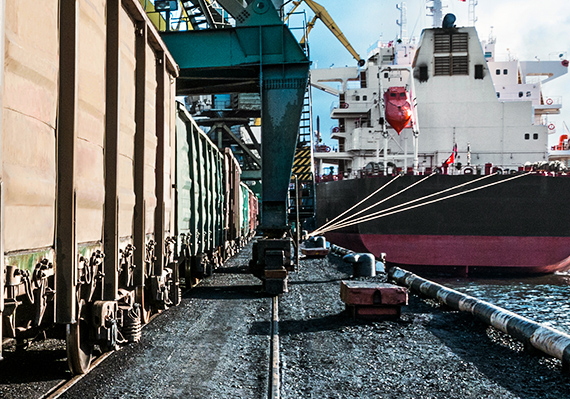Building a supply chain simulation model for long-term value
Ask any resources company, and they will tell you that supply chains are inherently complex and challenging to operate. They are subject to random disruptions and perturbations such as weather, equipment breakdowns, grade fluctuations and other highly variable external factors. This unavoidable complexity and variability can be tamed using the right analytical approach, like discrete event simulation. With its proven track record, it's an ideal technique to help the resources industry understand and optimise their logistics systems.
"Simulation models add value across all life cycle stages of a supply chain from concept design studies to construction and commissioning, operations, and expansion".
If a company is considering employing a simulation model to understand their supply chain better, there is no time like the present, says Polymathian simulation expert Michael Dallimore, "Simulation models add value across all life cycle stages of a supply chain from concept design studies to construction and commissioning, operations, and expansion". When applied during the early phases of a supply chain, simulation focuses on getting the design right to ensure the proposed system will reliably deliver the desired throughput. During commissioning and start-up, simulation is used to understand better how a new subsystem will impact the broader environment. For systems already up and running, the simulation model improves efficiency and throughput by testing changes with what-if scenarios.
The development of a simulation model is an investment in the future. The early development and continued maintenance of a simulation model will increase its value over time. Typically, operators see a return of investment in excess of 10:1 due to the additional revenue from increasing capacity or cost savings from avoiding overly specific equipment. An example of this is often seen in rail networks when dual track is specified at considerable cost despite it resulting in little to no increase in production. Which is why it's never too early to incorporate a simulation model into your supply chain design or improvements, whether for a green or brownfield projects.
Deciding when or at what stage to implement a simulation model, consider whether to start broad with a large scope (entire supply chain) or start narrow with a specific scope (processing plant). "When clients initially engage Polymathian to build a simulation model, they invariably have a pressing and specific question that needs answering", said Michael. "This informs whether we start broad and consider the end-to-end system before adding additional system details or whether we focus on a specific area. Neither approach is inherently better or worse since the goal of the model is to deliver valuable system insights as quickly as possible".
The Data Dilemma
But first, to build a model, we must start with data. All data is helpful, but the most valuable information is the raw data. Examples of useful raw data in logistics chains include conveyor belt weightometer measurements, mobile equipment locations and fixed plan operating states.
"At Polymathian, our simulation experts have the experience required to sift through customer data to determine how best to use it or not use it. This is another reason customers shouldn't let their perceived lack of data hold them back from building a simulation model".
"Clients shouldn't worry about how 'clean' their data is because most firms capable of building simulation models have the analytical horsepower to clean and interpret any data provided", continued Michael. "At Polymathian, our simulation experts specialise in sifting through customer data to determine how best to use it or not use it. This is another reason customers shouldn't let their perceived lack of data hold them back from building a simulation model". Data can also be acquired from additional third-party sources, such as equipment performance and reliability data from equipment manufacturers. Polymathian benchmark data or data from comparable operations can also be used to feed simulation models.
Building the Model
It might be surprising to some that the easiest part of building a simulation model is the animation of the client's system. Modern simulation software makes it easy to display and link trucks, trains, stockpiles, and conveyors into a visualisation that matches the real system. An animation can be pulled together in days, maybe even hours; however, these early representations are often only surface deep. The only way for the model to deliver truly valuable insights is if it also captures how the actual system operates. Effectively, the developer codes the operational control system into the model with all the intricate dependencies, behavioural triggers, and feedback loops that are unique and specific to the existing system. Building in the right level of detail and understanding the appropriate level of abstraction is where the "art" of simulation begins and the binary ends. Getting this nuanced process right comes with experience. Without this level of expertise, a model could be useless or, worse, lead to incorrect conclusions and recommendations.
There is no way of getting around the fact that building a simulation model takes time, which is why Polymathian looks for early insights during the data analysis phase to help influence the design and current operations. It's important to get the preliminary model up and running quickly to bring clients into the process to help verify and validate a model. This ensures that the model fully represents the operation and introduces the client to simulation methodologies to accelerate the time to value.
Supply chains are complicated with many system interactions and variables occuring in a sequence of time-dependent events, making them ideal for modelling with discrete event simulation. Here are just a few circumstances where simulation modelling can provide enormous value:
- CAPEX projects - large capital expenditures where the consequences of spending unnecessarily are significant
- Fragmented design studies - when different teams are responsible for a system's overall design, which is often the case for CAPEX projects, a simulation model will identify misalignments and unite system components
- Multi-user supply chains - in shared infrastructure environments, a simulation model can be utilised by an independent system coordinator to maximise system throughput and prioritise upgrades for the benefit of stakeholders
- Underperforming supply chains - if a system is not achieving name-plate capacity, a simulation model can identify root causes without putting further stress on an already underperforming system
Polymathian's Point of Difference
The experience Polymathian provides comes with additional capabilities not found with all simulation providers. Polymathian offers further customisation and optimisation capabilities by leveraging our large team of software programmers and optimisation experts. Rather than just using commercially available simulation packages off the shelf, we also use a higher-level generic programming language like Python combined with simulation libraries.
Using Python allows us to couple simulation with mathematical optimisation techniques. The model can be built to validate scheduling strategies derived from mathematical optimisation and then integrate them into the scheduling solution. The same algorithm that is used in the real world can also be included in the simulation model. These programming capabilities allow a control system to be embedded inside the simulation model to ensure it behaves exactly like the existing system.

Conclusion
The early adoption of a simulation model into a supply chain's operating strategy will increase its value over time. A model that is initially commissioned to support the detailed design of a greenfield project will provide value from the start by right-sizing the design to optimise the initial CAPEX. That same model can then help with the operational readiness phase of the project by testing ramp-up schedules and predicting system behaviour. Further into the system's life cycle, the model will support decision making by allowing what-if analysis of any new or proposed changes, such as a new maintenance schedule. Or making more significant decisions around system capacity: a simulation model informs decisions by allowing decision-makers to experiment with different operating variables to work out how to increase production without taking the system offline.
Key points to consider:
- It is never too late to engage with simulation experts to build a system model
- Do not let your concern for available data hold you back
- Maintaining a simulation model will provide continued value for the life of the supply chain
With the right approach and sound data, providing an accurate representation of the interactions within a complex system can be achieved with a simulation model. A validated and trusted system model that is continuously maintained allows operators to test and iterate rapidly through improvement ideas and upgrade pathways. Forward-thinking companies put this type of IP asset in place before the immediate need for specific answers, resulting in the kind of agile operation necessary in today's uncertain world.

Michael Dallimore has extensive experience in iron ore, copper and bulk haulage sectors and has provided simulation and analytics solutions to most of the major mining houses both in Australia and internationally. Currently, Michael manages operations for Polymathian's Perth location. Connect with Mike on LinkedIn.






